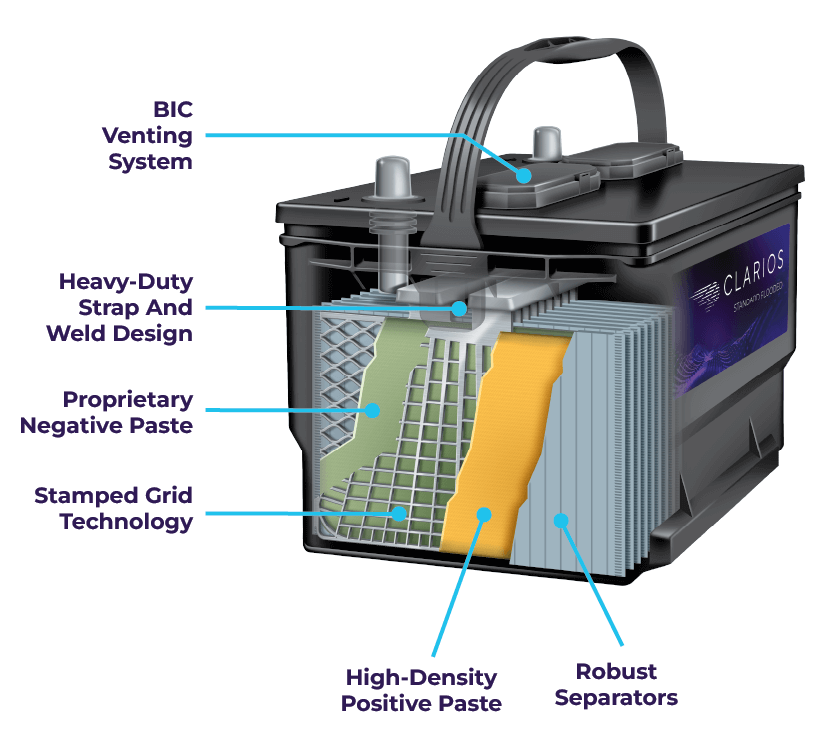Standard Flooded Batteries
Reliable, proven power for everyday needs
What Is a Standard Flooded Battery?
Standard flooded lead-acid batteries, also known as “wet cell” batteries, use lead plates submerged in a liquid electrolyte of sulfuric acid and water. Each 12-volt battery contains six cells that produce electrical energy through a chemical reaction.
Key Features
- Reliable Starting Power: Great for SLI (starting, lighting, ignition) use.
- Cost-Effective: Affordable option compared to AGM or gel batteries.
- Ventilation Needs: Emits gases while charging—requires proper ventilation.

Advantages
- Proven Technology: Trusted and widely available power solution.
- High-Surge Currents: Delivers strong cranking power for starts.
- Easy to Recycle: One of the most recycled battery types globally.
Disadvantages
- Regular Maintenance: Not ideal for start stop and electronics-heavy vehicles.
- Position Sensitivity: Must remain upright to avoid spills.
Maintenance Tips
-
 Inspect Regularly: Watch for cracks, leaks, or corrosion.
Inspect Regularly: Watch for cracks, leaks, or corrosion.
-
 Clean Terminals: Prevent buildup for good connections.
Clean Terminals: Prevent buildup for good connections.
-
 Recharge Promptly: Avoid sulfation by keeping it charged.
Recharge Promptly: Avoid sulfation by keeping it charged.
Common Applications
- Automotive: Cars, motorcycles, and trucks.
- Industrial Equipment: Forklifts, UPS systems, and machinery.
- Renewable Energy: Solar and wind system storage.
Clarios creates the most advanced battery technologies for virtually every type of vehicle. We are a global leader in energy storage solutions, powering one in three of the world’s vehicles. We partner with our customers to develop smarter solutions that make people’s lives better.

